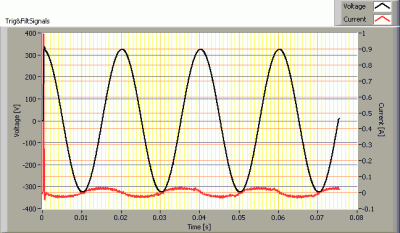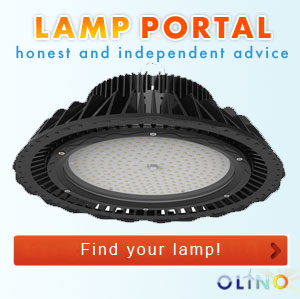 With every lamp measurement comes an eulumdat file. This is a photometric file enabling you to simulate light distribution and light patterns in a certain area like an office, or on streets etc.
With every lamp measurement comes an eulumdat file. This is a photometric file enabling you to simulate light distribution and light patterns in a certain area like an office, or on streets etc.
It appears that two programs, Qlumedit, and LDTeditor, do read in differently an equal eulumdat file when symmetry is present along the C90 C270 axis.
Personally, I do not understand the way LDT editor does it.
Update 3 March 2015: One more catch with DIalux and IES file. Dialux does not well understand dimensions used in IES files.
LumitexT – Endurance test 4x strip LumiBOX-XT(NV) 350mm 3-LED
Posted by Marcel van der Steen in Endurance Test No Comments»LumitexT has put 4 LED-strips in endurance test.![]()
This article presents the endurance test results. The test has run more than 6,000 hours. Then the test went on until 8,400 hours. The graphs have been updated.
See also the results of the 0-hours test.
Lampreparatur im Studentenwohnheim
Posted by Marcel van der Steen in Energy saving, Explanation, Lamps No Comments» Dieser Artikel zeigt warum eine Leuchtstoffröhre nicht mehr funktionierte und die Erfahrung deren Reparatur. Diese Aktion hat die Folge, dass man jetzt die alte Leuchte niet wegsmeißen muss sondern weiter verwenden kann, aber auf Grund des Alters der Leuchte war es nicht so einfach sie sicher zu reparieren.
Dieser Artikel zeigt warum eine Leuchtstoffröhre nicht mehr funktionierte und die Erfahrung deren Reparatur. Diese Aktion hat die Folge, dass man jetzt die alte Leuchte niet wegsmeißen muss sondern weiter verwenden kann, aber auf Grund des Alters der Leuchte war es nicht so einfach sie sicher zu reparieren.
Solarzellenpaneele oder Sonnenkollektoren?
Posted by Marcel van der Steen in Energy saving, Explanation, Solar energy No Comments» In diesem Artikel erkläre ich wie ich eine Wahl getroffen habe zwischen Solarzellenpaneele (oder kürzer Solarpaneele, bringen elektrische Energie) und Sonnenkollektoren (bringen Wärme-energie). Ich habe schön eine Wärmepumpe (Nutzung der Erdwärme mittels Wasser) und vielen raten mir an Sonnenkollektoren zu verwenden, damit die warmes Wasser machen wenn es viel Sonne gibt. Das Pufferfass wird so extra aufgewärmt durch warmes Wasser von den Kollektoren damit die Wärmepumpe keine (elektrische) Energie anwenden muss für Heizung. Dazu kommt noch dass für die Heizung warmes Wasser eine Wärmepumpe ein niedrigeres Leistungszahl hat weil die Temperatur des Wassers hoch sein muss (45 – 50 Grad).
In diesem Artikel erkläre ich wie ich eine Wahl getroffen habe zwischen Solarzellenpaneele (oder kürzer Solarpaneele, bringen elektrische Energie) und Sonnenkollektoren (bringen Wärme-energie). Ich habe schön eine Wärmepumpe (Nutzung der Erdwärme mittels Wasser) und vielen raten mir an Sonnenkollektoren zu verwenden, damit die warmes Wasser machen wenn es viel Sonne gibt. Das Pufferfass wird so extra aufgewärmt durch warmes Wasser von den Kollektoren damit die Wärmepumpe keine (elektrische) Energie anwenden muss für Heizung. Dazu kommt noch dass für die Heizung warmes Wasser eine Wärmepumpe ein niedrigeres Leistungszahl hat weil die Temperatur des Wassers hoch sein muss (45 – 50 Grad).
Dieser Artikel macht einen Energie- und Kostenvergleich zwischen beide Forme von Energieerzeugung.
Lemnis Lighting Asia – Endurance test 120 cm glass led tube
Posted by Marcel van der Steen in Endurance Test 1 Comment»![]() Lemnis Lightings Asia has put a glass led tube in endurance test.
Lemnis Lightings Asia has put a glass led tube in endurance test.
This article presents the endurance test results. The test has run more than 11,000 hours.
See also the results of the 0-hours test.
MOOOI – Endurance test Heracleum II 7V DC
Posted by Marcel van der Steen in Endurance Test No Comments» MOOOI has put an led luminaire in form of a branch of a tree, in endurance test. The power supply used is 7.0 V and an additional capacitor is used.
MOOOI has put an led luminaire in form of a branch of a tree, in endurance test. The power supply used is 7.0 V and an additional capacitor is used.
This article presents the endurance test results. The test has run 25,000 hours.
 MOOOI has put an led luminaire in form of a branch of a tree, in endurance test.
MOOOI has put an led luminaire in form of a branch of a tree, in endurance test.
This article presents the endurance test results. The test has run 25,000 hours.
Hato Lighting Solutions – Endurance test Led Luminaire
Posted by Marcel van der Steen in Endurance Test No Comments» Hato Lighting Solutions has put an led luminaire in an endurance test.
Hato Lighting Solutions has put an led luminaire in an endurance test.
This article presents the endurance test results. The test has run 21.500 hours and still runs.
Update Jan 2015: the test has run for over 31,000 hours and the graphs are updated.
 The S/P ratio has been explained before on this website. Now two Technical Memorandums (TM 12-12 and TM 24-13) of the Illuminating Engineering Society of North America (IESNA) elaborate on how and how much advantage one can make on using light with a high S/P ratio.
The S/P ratio has been explained before on this website. Now two Technical Memorandums (TM 12-12 and TM 24-13) of the Illuminating Engineering Society of North America (IESNA) elaborate on how and how much advantage one can make on using light with a high S/P ratio.
In short it comes down to this: at low environmental light levels (such as in streets at night with street lights on) your eye works with night vision (you loose the colors in your view but still can see a lot of details and overview with only moon light and light from stars). Lamps with a specific light (a specific spectrum) suited for this night vision (meaning high S/P ratio) will lead to an increase of brightness perception. So we need less light for the same brightness impression.
A second effect is valid for light levels indoor (reading, work on computer, work on electronic and mechanic setups, repairing things etc). When you use light with a high blue content (cold white, meaning also high S/P ratio) then this results in a decrease of pupil size which results in a sharper view. Thanks to this the average light level can go down to still have the same view-efficiency.
Inrush current for (led) light bulbs
Posted by Marcel van der Steen in Explanation, Lamps 27 Comments» In this article I explain the inrush current phenomenon for cold lamps. This is the current that flows in a short time period just after switch on of the (grid)voltage. This current peak for an (led) light bulb is directly comparable to that of a motor. The inrush current measurement function of for instance a digital multi meter is for the lamp inrusch current not suitable.
In this article I explain the inrush current phenomenon for cold lamps. This is the current that flows in a short time period just after switch on of the (grid)voltage. This current peak for an (led) light bulb is directly comparable to that of a motor. The inrush current measurement function of for instance a digital multi meter is for the lamp inrusch current not suitable.
The measurements on the inrush current at the measured lamps is done in a way that gives relevant info of the peak currents and a parameter is derived that is needed in selecting the correct fuses.





Recent Comments